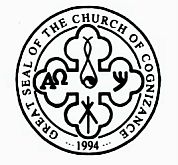This page provides a brief lesson to understanding Weblogs.
LESSON 1
First you need to know IP addresses are like Telephone Numbers they direct the calls toweb resources on the Internet. Each element addresses 0-255 locations. IPs are made upof 256 elements, of 256 elements, of 256 elements, of 256 elements. The last 256 elementnumber is the most signifigant to identifying individual units of the element to the left of it. Which is ussually an identifier of the Network it belongs to. There are 3 types of networks depending on there size. The left most elements identify their type.
Class A networks (0.x.x.x to 127.x.x.x) A list of Class A network owners can be found at <a target="_blank" class="wiki external" href="http://www.alain.knaff.lu/networks/a/indexa.html">http://www.alain.knaff.lu/networks/a/indexa.html<span class="icon icon-link-external fa fa-external-link fa-fw " ></span></a>
Class B networks (128.0.x.x to 191.255.x.x) A list of Class B network owners can be found at <a target="_blank" class="wiki external" href="http://www.alain.knaff.lu/networks/b/indexb.html">http://www.alain.knaff.lu/networks/b/indexb.html<span class="icon icon-link-external fa fa-external-link fa-fw " ></span></a>
Class C networks (192.0.0.x to 223.255.255.x) A list of Class C network owners can be found at <a target="_blank" class="wiki external" href="http://www.alain.knaff.lu/networks/c/indexc.html">http://www.alain.knaff.lu/networks/c/indexc.html<span class="icon icon-link-external fa fa-external-link fa-fw " ></span></a>
Every element of the internet are connected by IP numbers.
Even your computer gets one assigned when you are online.
Physical locations can often be looked up at <a target="_blank" class="wiki external" href="http://geobytes.com/IpLocator.htm">http://geobytes.com/IpLocator.htm<span class="icon icon-link-external fa fa-external-link fa-fw " ></span></a>
The link to Arin below the info will give more info
LESSON 2
When a request is made to a web site, most websites keep logs of what computer made the request, what they request, and otherinformation. Below is a typical Weblog entry. Each element will be describedabove it.IP of requester date and time of the request What is requested Status code bytes transfered The page the requester was at prior to taking a link to the current request Information about the requesters browser72.227.26.228 - - <a class="wiki" href="27/Feb/2006:11:56:43 +0800" rel="">27/Feb/2006:11:56:43 +0800</a> "GET / HTTP/1.1" 200 291 "http://www.godlikeproductions.com/bbs/message.php?messageid=216374&amp;mpage=1&amp;showdate=2/26/06" "Mozilla/5.0 (Windows; U; Windows NT 5.1; en-US; rv:1.7.12) Gecko/20050915 Firefox/1.0.7" The element under "what is requested" "GET / HTTP/1.1" means that the request was to the root of the website, or homepage. Basically the call like <a target="_blank" class="wiki external" href="http://haoma.orgwithout">http://haoma.orgwithout<span class="icon icon-link-external fa fa-external-link fa-fw " ></span></a> any directory info. Once that is in your browser then request to other elementsto construct the page can be made with additional "GET" commands. If the first entry of a IP address in a log starts off with a"GET /directory/directory/item" then that request resulted fromthat request being entered into the address bar of the browserby the person making the request. If a "GET comes after the firstentry then it is either filling the page with the various picturesand other part. Or a request for another page. Many page requestbegin with /cgi because a person is running a script on their siteto answer page request. What "Status Codes" are is information returned by the serverto the browser to let it know information about the request. such as if the page has moved, begin downloading the info, etc. Elements in the log that show up "_" means the requesters browseris blocking that information from being sent.
A list of status codes can be found at <a target="_blank" class="wiki external" href="http://www.w3.org/Protocols/rfc2616/rfc2616-sec10.html">http://www.w3.org/Protocols/rfc2616/rfc2616-sec10.html<span class="icon icon-link-external fa fa-external-link fa-fw " ></span></a>
Time Zone conversions can be made at <a target="_blank" class="wiki external" href="http://www.timeanddate.com/worldclock/converter.html">http://www.timeanddate.com/worldclock/converter.html<span class="icon icon-link-external fa fa-external-link fa-fw " ></span></a>
The +0800 is the Zone for Hong Kong which is where the COC website is located.
That is the end of this simple lesson. Have fun exploring logs!
